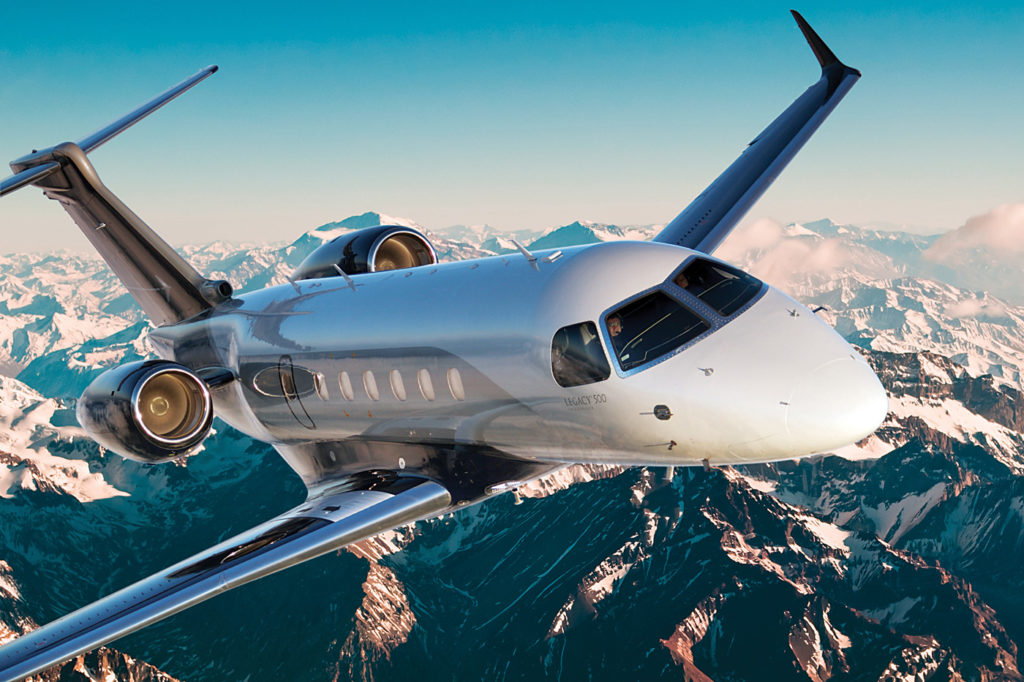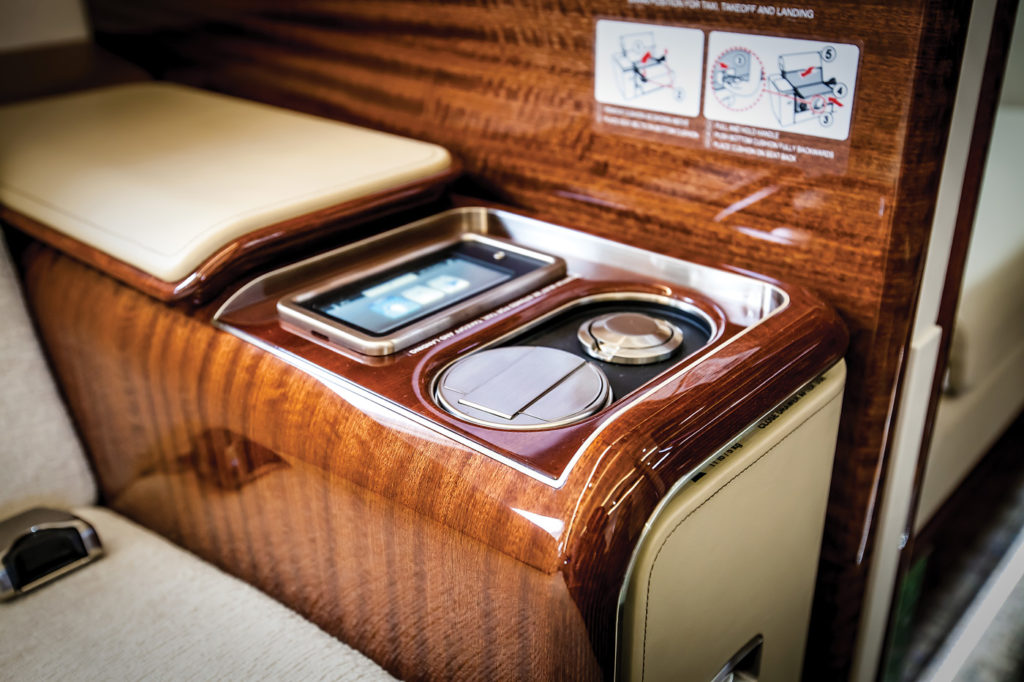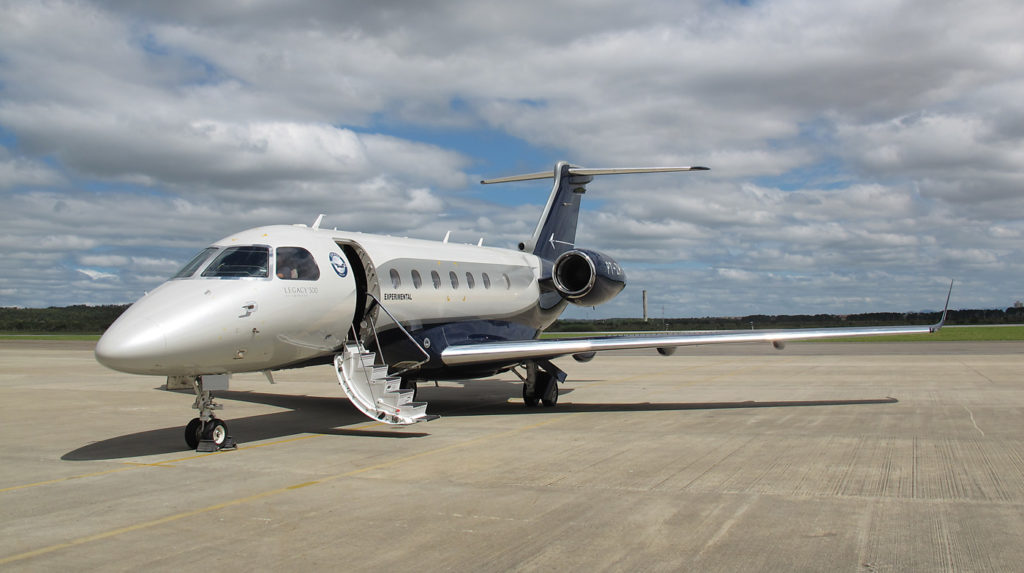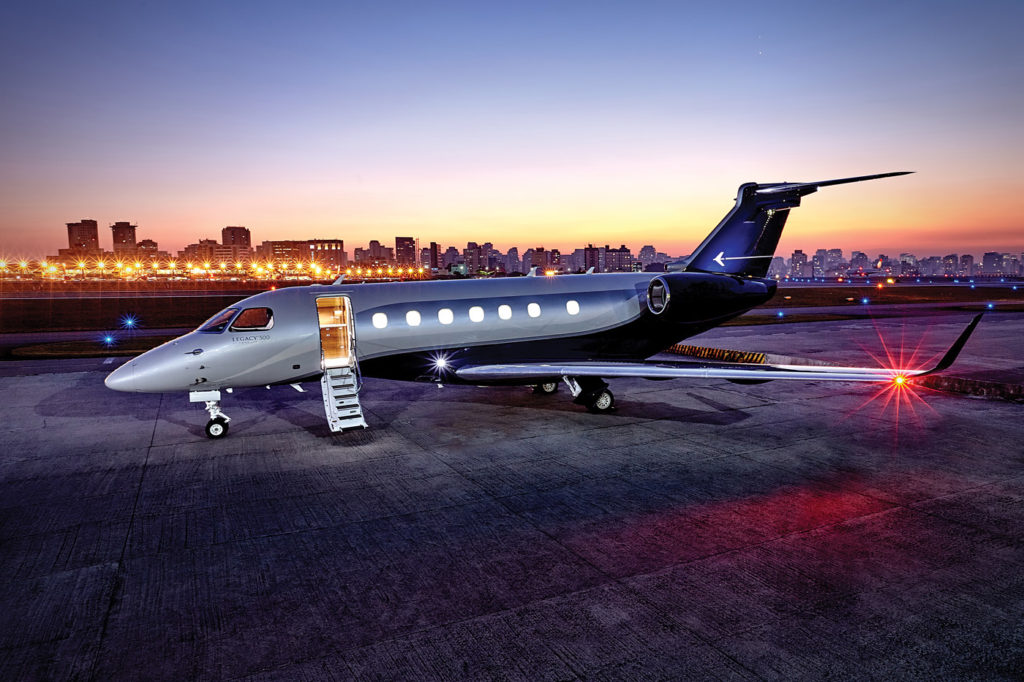Estimated reading time 11 minutes, 19 seconds.
“Well, boys, where shall we go today?”
With my entourage in tow, I strode from my limousine onto the waiting airplane. A gleaming new Embraer Legacy 500 business jet beckoned, and I was enjoying the delusion that I had somehow been elevated to the jet-set.

OK, you caught me. There was no limo and no jet-set, but the enquiry was real.
Embraer Executive Jets touts state-of-the-art technology when describing its new Legacy 450 and Legacy 500 bizjets, but fancy equipment aside, performance and capability define an airplane’s merits. It was natural to wonder, “What could we do with this thing?”
The answer, in short, is plenty. With up to 12 passenger seats, a maximum published range of 3,125 nautical miles, and respectable field performance, Embraer’s Legacy 500 is a proper trans-continental midsize jet with exceptional utility. As we’ll see, impressive technology adds to the value proposition.
CREATING A LEGACY
Brazil-based Embraer made a name for itself in North America with regional jets for the airline market, before decisively entering business aviation about a decade ago. Having successfully repurposed its ERJ145 airliner as the Legacy 600 bizjet, Embraer took on the very-light and light jet segments with its popular Phenom 100 and 300 models. The Lineage 1000E, based on the E190 airliner, serves the I-Need-a-Really-Big-Jet customer.

That left a hole in the market, at least as Embraer saw it. The Legacy 450 and 500 were both clean-sheet designs, intended to bridge the market gap between Embraer’s Phenom light jets and their large airliner-derived Legacy/Lineage models. Embraer designed the Legacy 500 for the midsize market, while its sibling, the Legacy 450, is described as a “mid-light” jet. The Legacy 500 was certified in August 2014, with certification of the Legacy 450 following a year later.

MEET THE JET
It seems that the Legacy 450 and Legacy 500 were designed as fraternal twins of a sort, sharing many similarities yet with distinctly different characters. The salient difference is simply that the Legacy 500 is longer in the centre fuselage by 3.5 feet, allowing for an additional row of seats. Embraer touts a 95 per cent commonality in parts and systems, allowing both airplanes to share a common cockpit layout, operational procedures and handling qualities.
Much thought was evidently put into the layout and finishing of the cabin. A flat cabin floor provides 1.83 metres (six feet) of headroom. Big windows and contrasting materials make for a bright and spacious interior. A well-equipped wet galley is standard on the Legacy 500.
Interior flexibility is a strong suit of both Legacy models. The Legacy 500, for example, may be fitted with double club seating for eight, plus an optional belted lavatory seat for the firm’s junior partner. If one packs pajamas, the two adjacent club seats can be converted into flat berths. Alternatively, left and/or right side-facing three-seat foldout divans can replace the aft set of club seats. An optional side- or forward-facing observer’s seat may be installed adjacent to the entry door, bringing the maximum passenger complement to 12.

The Honeywell HTF7500E turbofan engines are featured on both models, although slightly de-rated on the lighter Legacy 450. Featuring dual-channel digital control (FADEC) and on-condition maintenance, variations of the engine have proven reliable and popular on other designs such as the Gulfstream G280 and the Bombardier Challenger 300/350.
The pre-flight inspection revealed a generous 110-cubic-foot unpressurized, optionally-heated external baggage compartment. Co-pilots will appreciate the integral folding ladder to facilitate access to its far corners. Alternatively, there is a 35-cubic-foot, in-flight accessible baggage compartment aft of the lavatory.
A comparison of the two Legacy models is interesting. Their performance numbers–runway requirements, climb, cruise speed–are almost identical, with the exception of range and payload. Leveraging their extensive commonality affords a simple choice between the Legacy 450 and Legacy 500: buying more jet allows one to carry more people further.
Daniel Bachmann, Embraer’s manager of communications, summarized the difference well, saying, “The Legacy 500 can do with nine people what the 450 can do with four.” For a tidy price difference of $US3.5 million for an additional 3.5 feet of jet, the Legacy twins nicely cover the mid-light and midsize markets.
SEEING IS BELIEVING
Our demonstration flight would take a brand new Legacy 500, registration N561EE, for a round-robin flight off the central Florida coast, returning to Embraer’s sprawling facility at the Melbourne airport.

Owing to paperwork issues, I was relegated to riding the jump seat, in lieu of my usual annoying tendency to leap into any empty left cockpit seat. The crew included Brad McKeage, vice-president of flight operations, in the left seat, and demonstration pilot Joaquim Paula in the right seat. My bruised ego was soothed by the opportunity to watch a trained crew in operation, instead of the more entertaining option of making a mess of things for myself.
In lieu of the optional datalink, Paula entered flight plan data manually into the flight management computer, which displayed graphical weight and balance, continuously updated with fuel burn, and related field-performance calculations. Loaded with two cockpit crew, one simulated chairman of the board in the cabin, and the author riding the jump seat, plus 6,970 pounds of fuel (about half capacity), our gross takeoff weight was 31,600 pounds, or 6,760 pounds below the maximum takeoff weight of 38,360 pounds (17,400 kg). The published payload with maximum fuel is 1,779 pounds, but of course that depends upon the owner’s appetite for options.

The cockpit seemed very spacious upon first impression, a perception enhanced by replacing the typical floor-mounted control yokes with compact side-mounted sticks. Among the advantages of a side-stick is that it affords an unobstructed view of the displays at any seating position. The pilots even get a sliding table that can be pulled from beneath the instrument panel.
The cockpit features the Rockwell Collins Pro Line Fusion avionics system; the panel predominated by four bright 15.1-inch diagonal landscape-oriented flight displays. Each display may be split into two, three or four panes, providing truly pilot-reconfigurable instruments.
The interface consists of either a conventional alpha-numeric keyboard or a mechanical trackball conveniently located outboard of each throttle, and provides for truly graphical flight planning.
Synthetic vision is standard equipment, while the optional compact Collins HGS-3500 heads-up guidance system premiers on the new Legacy models, which includes the capability to integrate both synthetic and enhanced imagery from an optional Rockwell Collins EVS-3000 visual/infrared sensor. Embraer claims that the HGS-3500 lightens pilot workload and reduces touchdown point dispersion, and is truly a capability multiplier on a jet in this class.

The brake- and steer-by-wire systems seemed smooth during taxiing. Cleared for takeoff from Runway 09R, McKeage pushed the autothrottles to the Takeoff detent and we were off. What appeared as a single aft input rotated us to about 20 degrees pitch, which the Legacy 500 held perfectly as the jet cleaned up and accelerated. The published takeoff distance is 4,084 feet at maximum takeoff weight under standard sea level conditions.
The Legacy 500 is capable of climbing to FL430 at maximum takeoff weight and standard conditions.
Level at FL410, McKeage set the throttles at the maximum continuous thrust (MCT) detent, and was rewarded with a high speed cruise of 470 KIAS (0.82 Mach) under standard conditions. Fuel flow was 1,840 pounds per hour, which was indeed slightly better than the published consumption.
If maximum range is the mission, then a long range cruise power setting will be preferred. Still at FL410, McKeage set the throttles, yielding 425 KIAS (0.74 Mach) and burning 1,430 pounds per hour of fuel.
The Legacy’s 9.7-pound-per-square-inch cabin pressure yields a comfortable cabin altitude of 6,000 feet at its published ceiling of FL450.

Enroute back to Melbourne, McKeage responded to my enquiry about the Legacy 500’s stall characteristics by retarding the throttles to idle and extending the speedbrakes from the clean configuration. He held altitude with progressive aft stick as the jet slowed. The autothrottles tried to save the day, so McKeage disabled them. Ultimately we were flying with full aft stick displacement, nicely stabilized at the maximum angle of attack, indicating 108 KIAS, but the jet would not stall. McKeage was grinning.
Similarly, he demonstrated how Embraer implemented bank angle protection. Lateral stick input commanded a roll rate, with the jet holding a precise bank angle upon stick release. In lieu of hard limits to constrain the pilot, the fly-by-wire (FBW) system demands the pilot to “override” it with additional stick force required in proportion to bank angle. When the force is released, the bank returns to the limit. FBW also provides pitch compensation in turns, obviating the need for back pressure. In terms of speed, load factor, bank angle and angle of attack, FBW enables the airplane to participate in its own limit protection. Such are the merits of FBW.
As a glassy, smooth twilight settled on the Florida coast, Paula set up the avionics for an instrument approach. Synthetic vision, standard on the Legacy, was particularly beneficial from my perch in the jump seat, as I could see topographical data, air traffic and even a perspective rendering of the runway with primary flight instrument data overlay on top. Coupled with the autothrottles engaged, the crew’s workload appeared to be zero.

Upon landing, the FBW induces a programmed de-rotation, so McKeage’s landing consisted largely of “flare and wait.” Nosewheel touchdown activated the automatic feature of the carbon brakes, which in conjunction with the hydraulically-actuated thrust reversers, provided for impressive deceleration. What could be easier?
The published minimum landing distance is 2,534 feet, at maximum landing weight and standard conditions.
HOW DO THEY DO IT?
Among its myriad technology innovations, if I were able to associate a single “Wow!” with the Legacy 450/500 jets, it would be this: Fly-by-wire in a midsize jet! Embraer uses a big font in its promotional material to proclaim that the Legacy models have “the most advanced flight controls system in any business jet priced below $52 million.” Absolutely.
It is often difficult to explain the merits of FBW, even to other pilots. The typical explanation is that it reduces pilot workload and improves ride quality for passengers, but FBW is more than that. Software tailors the entire flying experience, shaping the control response, enhancing stability, and providing for various means of flight envelope protection, including thrust asymmetry compensation. Instead of simply using the stick to position the control surfaces in the wind, FBW enables a control mode where the pilot directly selects flight path. The result is far simplified handling, and few pilots fail to appreciate its merits once “converted.”
The maintenance department will appreciate FBW in terms of reduced parts count, labour and downtime. An example perhaps? The Legacy’s integrated Aircraft Information Manager coordinates updates of databases and charts, which can be performed wirelessly by the crew in minutes from anywhere in the world.
TAKING STOCK OF THE TECH
The fundamental measures of an aircraft haven’t changed since Orville and Wilbur downloaded their first software update: safety, reliability, performance and handling. Embraer has invested heavily in technology with its Legacy 450 and Legacy 500 models. Approaching the jet skeptically, I mused about whether all the technology delivers a commensurate utility. My time in the Legacy 500 convinced me.
The Legacy 500 may well shake things up a bit. A midsize jet with full-authority fly-by-wire, synthetic and enhanced vision, sidesticks, heads-up display and auto-brakes–to name a few gee whiz features–makes the Legacy unique. In terms of technology, it stepped to the front of the line as the state-of-the-art in this bizjet segment.
The merits of the Legacy 450 and Legacy 500 jets will no doubt prove themselves to the market. Their time has come.

